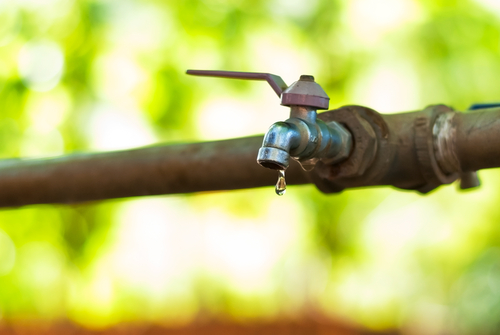Many parts of the U.S. are experiencing early drought conditions again this year, including Texas, Colorado and Southern California. Lack of rainfall negatively affects agriculture, livestock, and drinking water quality. Drought also increases the risk of destructive wildfires.

Because agriculture uses 80% of our water supply, our food supply is threatened by continued drought. Our recent blog post, “How Do You Feed 9 Billion People?” addresses the growing need for drought resistant crops and how scientists are actively working on crop models to predict the needs of a rapidly growing global population.
While Mother Nature and climate change have more influence on the amount of rainfall received in the western states, there are some things that an individual can do to help lessen the demand for clean drinking water and water for general household use. Tips listed on the web site, Save Our Water, include:
proper maintenance and repairs of home plumbing systems and fixtures
reduce the amount of water used by irrigation systems for landscaping
upgrading home appliances and plumbing fixtures to newer energy efficient models
greener alternatives than water, such as using a broom to sweep sidewalks and driveways instead of hosing them down and wasting water
Southern California homeowners are more likely to waste clean water on landscaping and home maintenance than residents in the other western states experiencing severe water shortages. Leaking pipes, faucets and toilets are easily fixed by calling a local plumber to perform the repairs and install new fixtures. A San Diego plumber can typically repair or replace a leaking kitchen faucet with a new, aerated faucet in less than one hour, which can save as much as 20 gallons of water every day. And replacing an old shower head with a low-flow model can reduce water use by 20% or more with every shower taken by each person in the household. That adds up to a lot of water saved!
In the kitchen, make sure the dishwasher is an energy efficient model; and only run the dishwasher when it is full to save both water and electricity. Install an aerator on the sink faucet to reduce water flow.
In the laundry room, replace old top loaders with new energy efficient front loaders, which can save as much as 16 gallons of water with every load. Run the spin cycle a second time to reduce drying time and save on electricity. Use the washer only when you have enough laundry to make a full load.
In the bathroom, try to be mindful of the amount of time spent in the shower. Many people can cut their shower time in half, saving an average of 5 gallons per minute. If your family prefers baths over showers, only fill the bathtub halfway – or less, which saves 12 gallons of water per bath. Don’t leave the water running while shaving or brushing teeth – turn the water on only when needed to rinse the razor or toothbrush.
Rethinking the way all of us use water can help reduce waste and make better use of the water resources available. Being mindful of the water we use and working together to increase awareness of how valuable water is to our daily lives can help make sure that clean, plentiful water will be there for all of us when we need it.
Author: Anna Kay Hicks
Photo: Old faucet from Shutterstock
[source: http://feeds.importantmedia.org/~r/IM-greenbuildingelements/~3/St-ynR-QrsU/]

Leave a Reply
You must be logged in to post a comment.